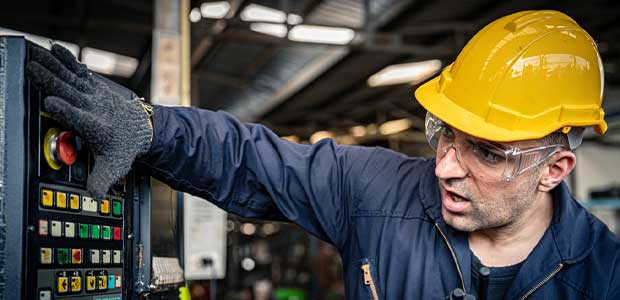
Enterprise AI for Industrial Companies Must Address Worker Alarm Fatigue-- A Third Generation of Technology is Doing Just That
If we want to really capture value with new technology, we’re going to have to devote more thought to the people in our organizations who can best harness and benefit most from that new tech.
- By Dominic Gallello
- Jun 17, 2021
A few statistics should be keeping industrial company CEOs up at night.
The first is that most monitoring equipment fails to prevent more than 80 percent of machine breakdowns, the ARC Advisory Group found. Video cameras, temperature sensors and human inspections catch only a fraction of breakdowns.
The second is that 85 percent of equipment breakdowns occur randomly despite preventative maintenance, as a Boeing study estimated. Most industrial processes are complex. Breakdowns stem from random incidents that can’t be anticipated even when following best practices to protect equipment.
Third, factories lose around 10 percent of their profits to breakdowns that cost $1.4 trillion a year, according to the National Association of Manufacturers. This statistic illustrates that relying on traditional monitoring and preventative maintenance to keep assembly lines moving is likely to cost money.
Lastly, more than 5,300 workers died on the job in 2019, the highest recorded since 2007, according to the Bureau of Labor Statistics. This statistic shows how lives are potentially at stake when we discuss properly functioning workflows.
In light of those numbers, manufacturers today are interested in predictive maintenance –leveraging artificial intelligence, machine learning, sophisticated sensors, the Internet of Things and other technology to identify the first stirrings of equipment breakdowns months before they occur.
I’m an unabashed advocate of further automation of industrial processes. But I’m here to say that technological innovation alone is not going to keep workers safe, save lost money or keep factory floors humming. If we want to really capture value with new technology, we’re going to have to devote more thought to the people in our organizations who can best harness and benefit most from that new tech.
We’ve entered an era when technicians wrap rubber bands around their computer mouse at terminals devoted to the automated alarms attached to sensors throughout facilities. The sensors constantly detect faults and trigger alarms. The humans can’t keep up as the feedback becomes overwhelming. The rubber bands cause the mouse to click, turning off the alarm until it rings again soon later.
Technology is useless if nobody can use it. What’s less obvious is that we need to keep this lesson at the forefront of our minds going forward as our technological options grow exponentially in number and processing capabilities, especially regarding AI.
No one can argue that Excel macros, Autolisp, MatLab, Python scripting and other tools have changed how engineers work. I would argue AI is now poised to do the same. For years it had been the exclusive preserve of data scientists, but the nature of the latest generation of AI requires that subject-matter experts work with it in order to optimize its performance. It only works when people use it, in other words.
The first generation of AI in the 1950s could imitate human thinking, computing calculations and imitating pre-programmed moves in a game of chess. The second generation created deep learning where the AI could identify patterns on its own but not necessarily interpret those patterns.
We are now entering the third generation of AI, where technology can identify, define and interpret patterns on its own. The AI can use that insight to predict when a breakdown might be emerging. Whereas second-generation AI could never conceive of unknown unknowns in an industrial process, third-generation AI is on the lookout for them.
But for third-generation AI to gain those insights, it will need to work with electrical, chemical, mechanical and other engineers in order to learn and appreciate the importance and nuances of its patterns and data from the human perspective. Otherwise, it won’t be able to derive any conclusions that would be helpful to humans.
Engineers afraid of transferring their skills to robots who will take their jobs can rest easy. They’ll be training AI not to replace them but to crunch data at a rate and scale that a human assistant would and should never be able to match – because its work suited to a machine that is nonetheless valuable to engineers and enriching to the AI’s skill set.
The fourth generation of AI, perhaps arriving in the 2030s, will include machines that will begin to learn how to learn, improving how they acquire new knowledge and skills. In the 2040s, I expect fifth-generation AI to be able to learn about new subjects organically yet without the help of humans at all.
These changes aren’t going to make people irrelevant. They are going to help industrial company CEOs optimize asset performance, save trillions of dollars, maybe save lives and hopefully sleep better at night.